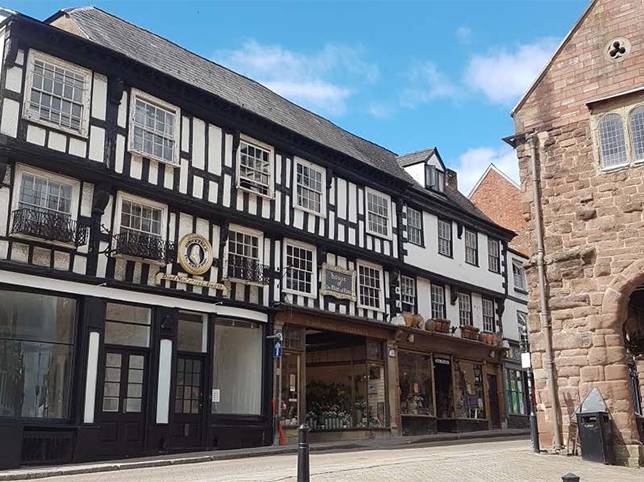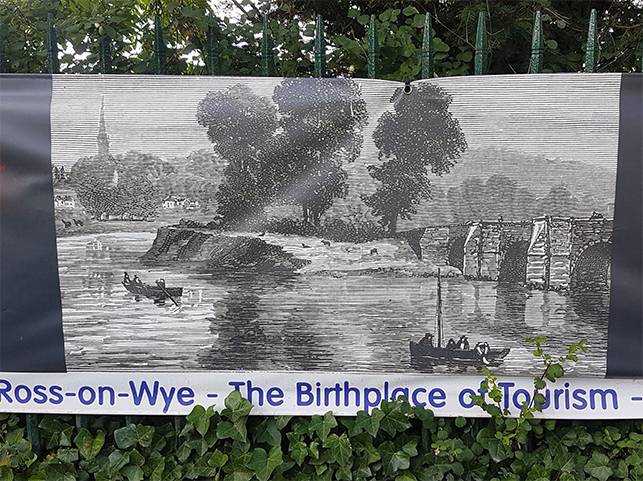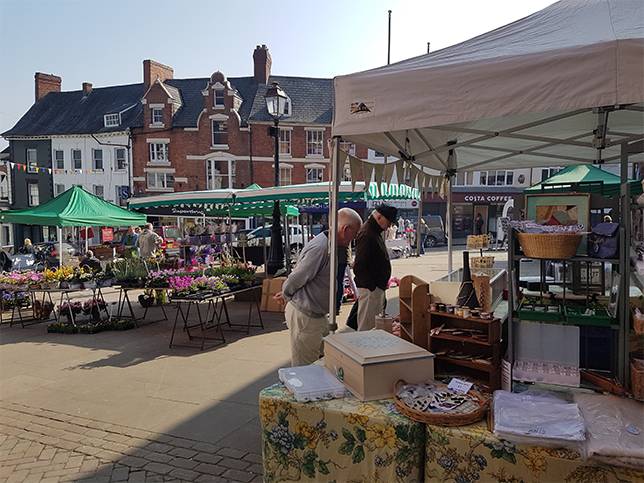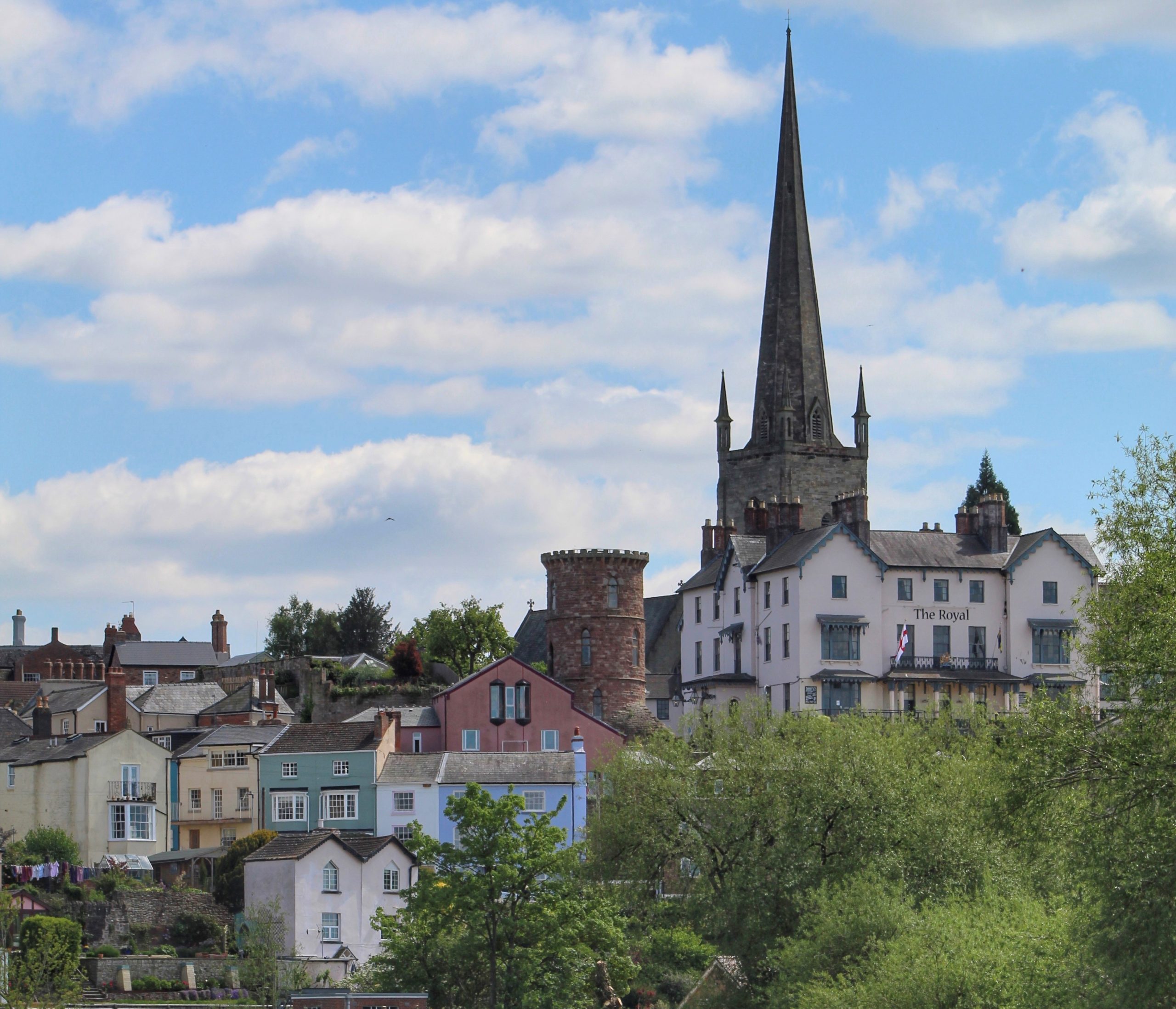History
The name Ross-on-Wye is derived from the Welsh or Celtic, ‘Rhosan’ meaning ‘a promontory’ and the ‘on Wye’ part was added in 1931. It is an attractive market town with a history going back to Bronze Age times. The architecture of its present buildings include Tudor, Georgian, Victorian and some interesting modern ones.

17th and 18th Centuries
The town grew up with Tudor timbered houses clustered around the 17th Century Sandstone Market Hall. There still remain some fine examples of such buildings, one being the house of John Kyrle, a major benefactor of Ross.
This town is renowned as the birthplace of British tourism. In the 18th Century, the Rector of Ross developed his Wye Tour along the river from Ross to Chepstow. After taking the tour, William Gilpin published the UK’s first guide book and by the end of the 18th Century the package tour was well established. 2020 marked the 250th anniversary of the Wye Tour.

Find out more
The town’s bookshops offer a wealth of publications dedicated to Ross-on-Wye and its fascinating history.

Earliest times
Excavations in 2009 on the Prospect revealed both Bronze Age and Roman remains as well as a 12th Century fortified manor house, the Bishop’s Palace. There is reference to Ross in the Doomsday Book of 1086 as a village and manor of the Bishop of Hereford, with a priest and a mill, indicating a settlement with both a church and corn mill.
The first official recognition of the importance of the town was the granting of a Charter by King Stephen in 1138 for the right to hold weekly markets.
The present church of St Mary the Virgin dates back to the 13th Century with additions and improvements being made throughout the centuries right up to the present time.

19th Century to the Present Day
Today the town has a population of about 11,500. There is evidence of the former railway and its station and now the motorway and major road networks link the town to larger centres.
It is the only town entirely within the boundaries of the Wye Valley Area of Outstanding Natural Beauty (AONB) and much of the town is also designated as a Conservation Area. Ross continued to attract visitors including Charles Dickens in Victorian times. Today the river is a particular draw, while the market, independent shops, cafés and pubs play a key role in keeping the town centre vibrant.

 01989 562373
01989 562373 admin@rosstc-herefordshire.gov.uk
admin@rosstc-herefordshire.gov.uk